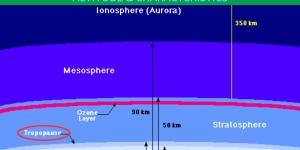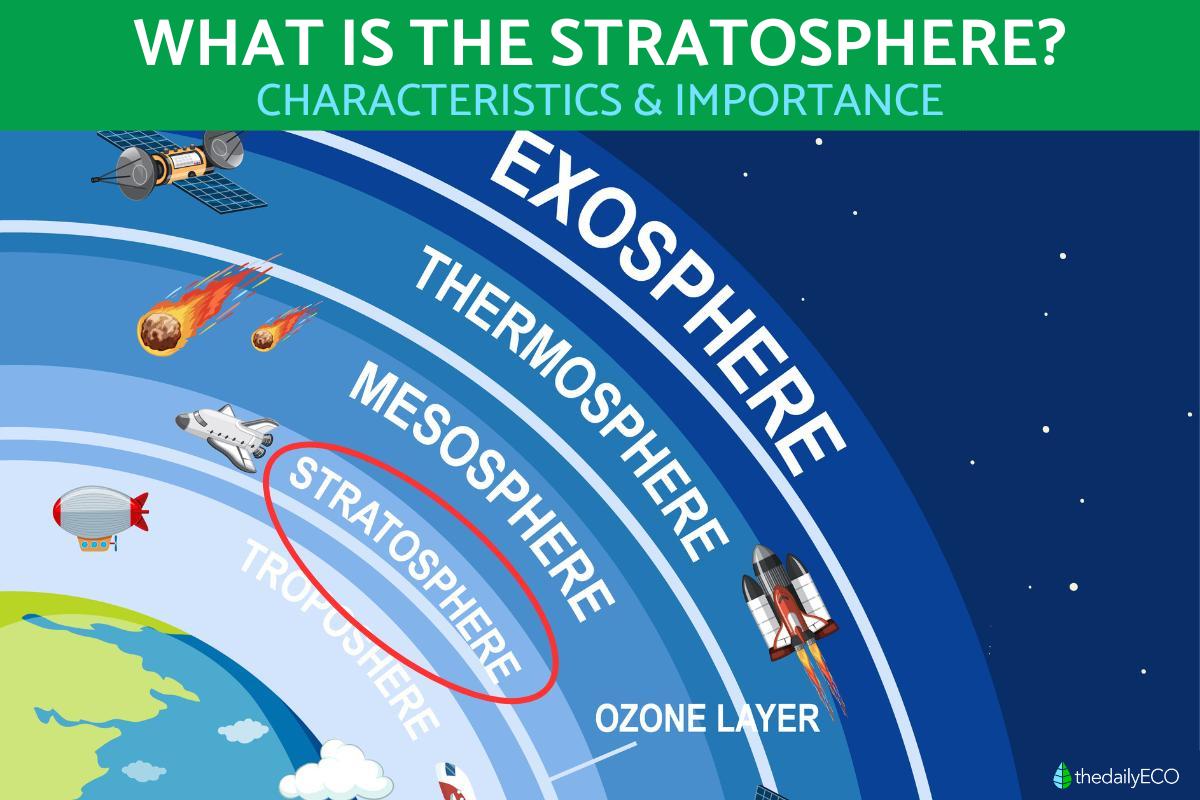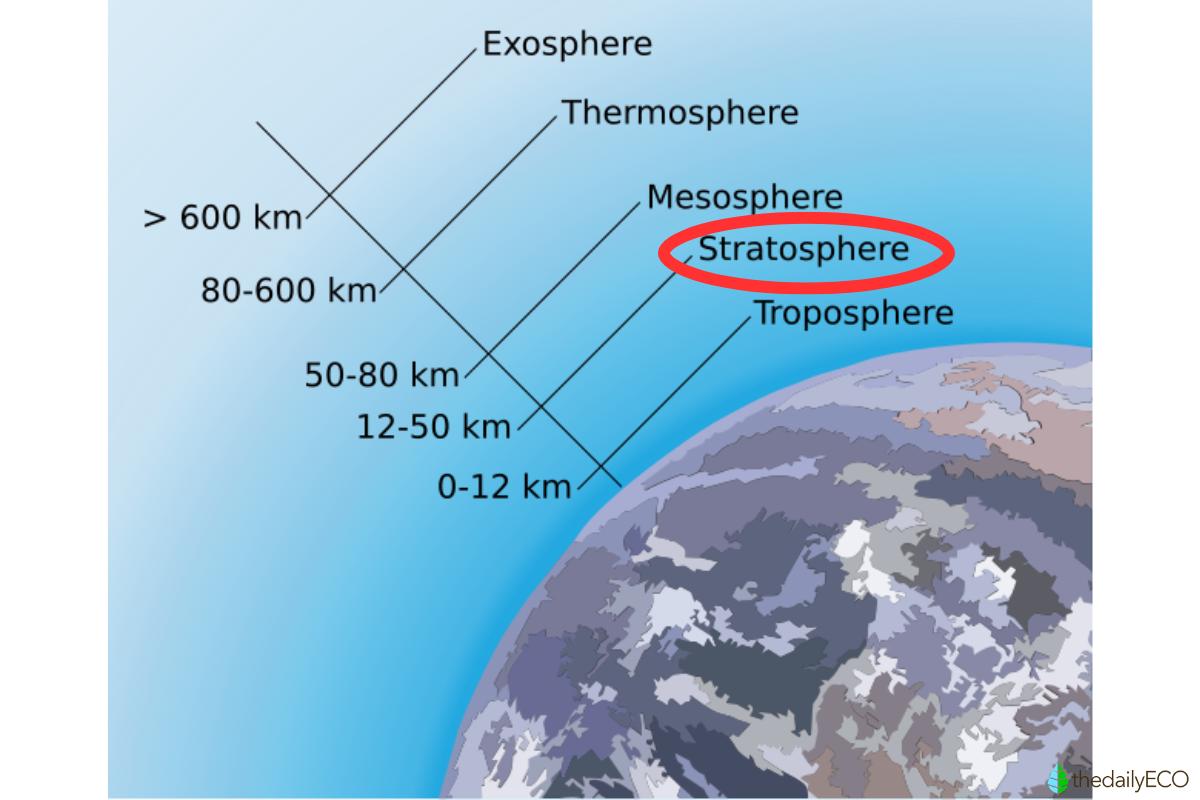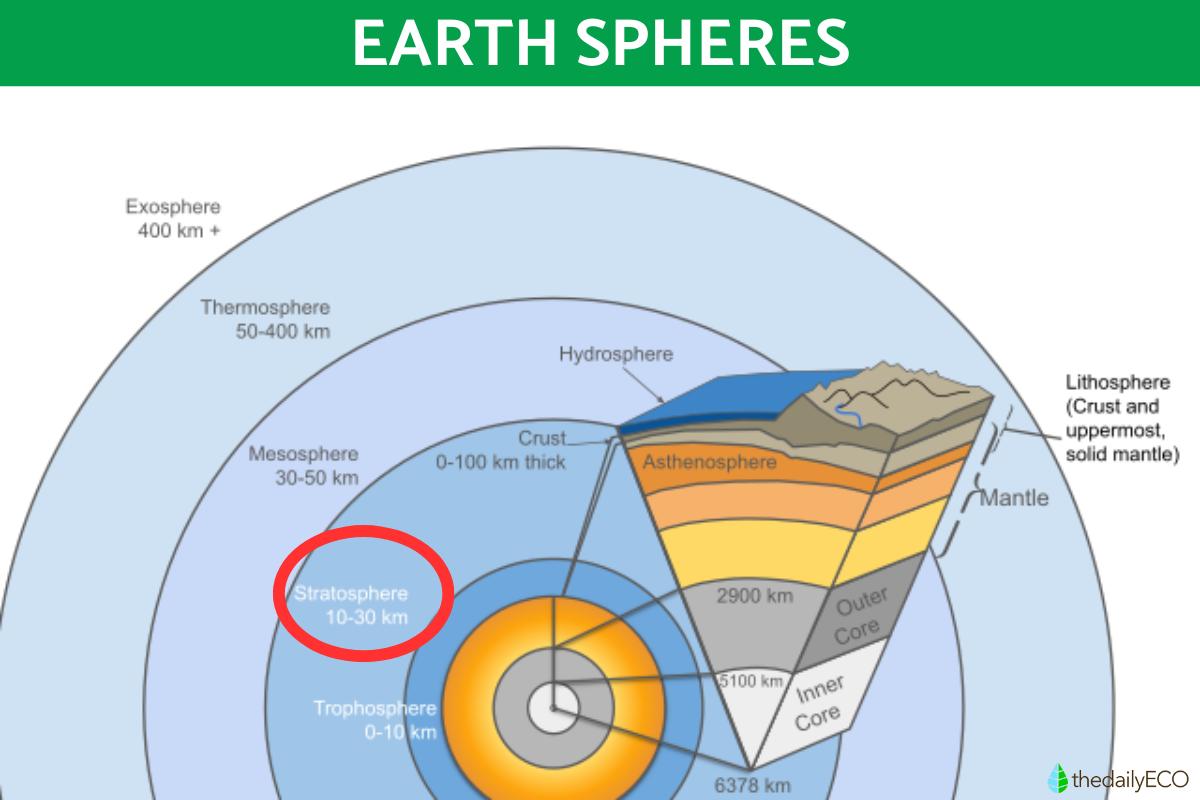What is the Stratosphere? - Characteristics and Importance


You may have heard of something going ‘stratospheric’, meaning it rises as high as possible. While this is a useful metaphor, it is not the most accurate. The stratosphere is a layer of the Earth's atmosphere, but it is neither the farthest away from nor the closest to the Earth's surface. It is located between other atmospheric layers known as the troposphere and the mesosphere. It extends approximately 6 to 31 miles (10 to 50 km) above sea level. Each layer of the atmosphere has vital functions for life on our planet and the stratosphere is no exception. It is particularly important in providing protection from ultraviolet light. We learn more about its characteristics and importance as thedailyECO asks what is the stratosphere?
What is the stratosphere?
The stratosphere is one of the layers that make up Earth's atmosphere, located just above the troposphere and below the mesosphere. The troposphere is the layer in which we live and where most meteorological phenomena occur. It extends from approximately 6-9 miles to 31 miles (10-15 km to 50 km) above the Earth's surface, although these figures can vary slightly depending on latitude and season.
Temperature decreases in the troposphere as you ascend, but the opposite occurs in the stratosphere.. This phenomenon is mainly due to the presence of the ozone layer, an area within the stratosphere that absorbs much of the ultraviolet (UV) radiation from the Sun. By absorbing this energy, ozone heats the surrounding air and creates a thermal gradient that causes the warmest air to be found in the upper layers.
This temperature inversion has an important effect since it stabilizes the stratosphere. As the warmer air is above the colder air, the formation of vertical currents like those we see in the troposphere is prevented. These vertical air currents are formed when warm air rises and cold air descends. The result is that storms and weather phenomena like those we see in the lower layer do not occur in the stratosphere.
As the ozone layer is under threat, you may want to read our article on how to fix the ozone layer to learn more.

Characteristics of the stratosphere
Now that we have a definition of the stratosphere, we can better understand its nature by looking at its characteristics:
- One of the main characteristics of the stratosphere is its height. As mentioned above, the height of the stratosphere begins approximately 6-9 miles (10-15 kilometers) above the Earth's surface, depending on factors such as latitude and season. For example, this layer can begin at an altitude of around 11 miles (17 km) in areas near the equator, while at the poles it can begin as low as 4 miles (7 km). Its upper limit is located around 31 miles (50 kilometers) above Earth, where the mesosphere begins.
- Another fundamental property is the temperature of the stratosphere, which behaves in a different way than the troposphere. In the lower part of the stratosphere, the temperature can be around -60ºC, while at its top it can reach 0ºC or even slightly higher.
- Like the rest of the atmosphere, the stratosphere is composed primarily of nitrogen and oxygen. What makes its composition unique is the presence of the ozone layer. This ozone-rich (O₃) layer lies between 9 and 22 miles (15 and 35 km) above sea level and acts as a protective shield, absorbing most high-energy ultraviolet radiation. It is for this reason the stratosphere plays a crucial role in preserving life on Earth's surface.
- Finally, it's worth noting that the stratosphere also contains strong winds and jet streams. These move from west to east at high speed. These currents influence global climate dynamics and are exploited by commercial airplanes flying at altitudes near the lower boundary of this layer, where the air is more stable and air resistance is lower.
You might be interested in our related article explaining more about these atmospheric winds with our article asking what is a jet stream?
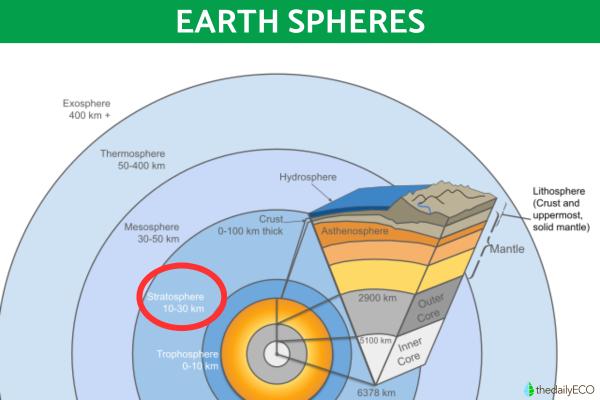
Function of the stratosphere
The stratosphere performs several essential functions for the balance of the planet and life on Earth. Although it is a region we don't directly perceive in our daily lives, its impact on human health, climate and ecosystems is profound and constant. It is fair to say that without it, life would not be able to continue in the same way.
- The most important function of the stratosphere is related to protection against ultraviolet (UV) radiation from the Sun. This is due to the presence of the ozone layer, located within this atmospheric layer. Ozone has the capacity to absorb more than 90% of the high-energy UV rays emitted by the Sun. Without this absorption, this radiation would reach the Earth's surface in greater quantities, resulting in serious consequences. These include an increase in skin cancer and eye damage, to negative effects on plants, animals and marine plankton. These act as the base of the aquatic food chain.
- In addition to acting as a protective shield, the stratosphere also influences global atmospheric circulation. Although storms and rain don't occur in this layer, its stability and the winds that travel through it play an important role in the dynamics of Earth's climate. Learn about what is atmospheric circulation in our related guide.
- Due to its stability, the stratosphere also serves as a transport medium for certain gases and particles, both natural and generated by human activity. For example, some volcanic eruptions can expel ash and gases into this layer, where they can remain for years. These help to reflect some solar radiation, temporarily affecting the planet's climate.
- On the other hand, the relative stability and lower air density of the stratosphere make it an ideal area for scientific research and for the flights of high-altitude aircraft, weather balloons and low-orbit satellites. In fact, many climate and outer space observations are conducted from platforms located in the stratosphere.

Importance of the stratosphere
The importance of the stratosphere lies in its role as a regulator and protector of the Earth's system. One of the key factors determining the importance of this layer is the presence of the ozone layer. As already mentioned, this is located in the middle of the stratosphere. Thanks to this ozone-rich layer, the Earth is protected from ultraviolet rays (UV-B and UV-C) which are highly energetic and harmful.
Without the stratosphere and its ozone content, solar radiation would penetrate more strongly, directly affecting living organisms. It would cause genetic mutations, increase the risk of skin cancer and eye diseases in humans, and damage phytoplankton, the basis of many aquatic food chains.
Another aspect that reflects the importance of the stratosphere is its role in scientific and technological research. Many research balloons and spy planes ( such as the U-2 and the SR-71 Blackbird) operate in the stratosphere due to its low turbulence and low humidity. Additionally, this layer is used for studies on air composition, aerosol behavior, ozone monitoring and global pollution analysis.
In ecological terms, the stratosphere also acts as a filter and buffer for atmospheric processes. Its response to volcanic emissions, forest fires or the accidental release of pollutants can influence how these elements disperse, degrade or remain in the environment.
Learn more general information about the outer reaches of our planet with our article asking what is the composition of the atmosphere?
If you want to read similar articles to What is the Stratosphere? - Characteristics and Importance, we recommend you visit our Facts about Earth and the universe category.
- Oriol Planas. (2022). Stratosphere: Definition and Characteristics. Solar Energy.
https://solar-energia.net/sistema-solar/tierra/capas/capas-atmosfera/estratosfera - Victoria Munilla. (2023). Stratosphere: What It Is, Characteristics, Function, and Importance. GEOencyclopedia.
https://www.geoenciclopedia.com/estratosfera-que-es-caracteristicas-funcion-e-importancia-624.html


